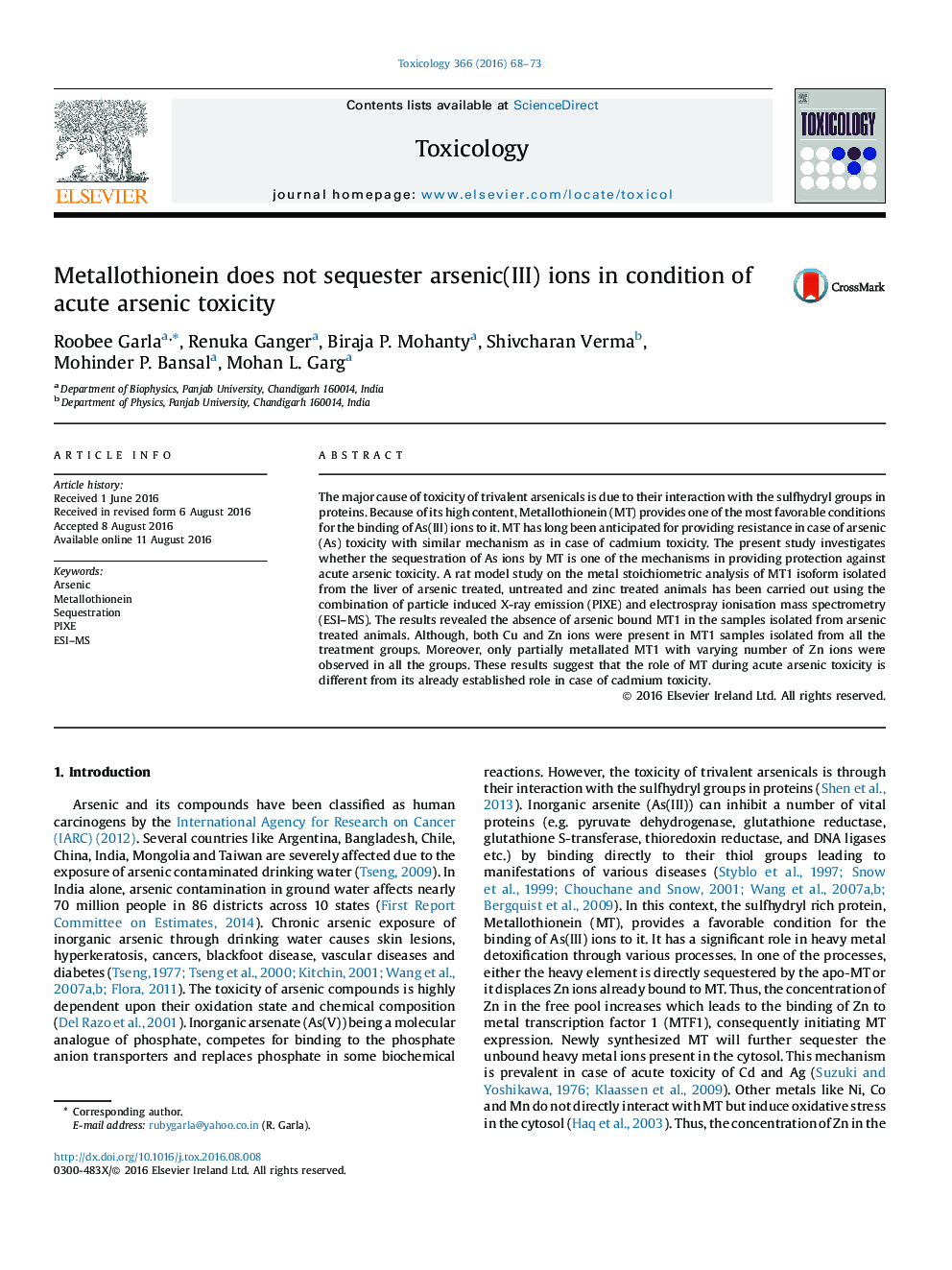| کد مقاله | کد نشریه | سال انتشار | مقاله انگلیسی | نسخه تمام متن |
|---|---|---|---|---|
| 2595401 | 1562304 | 2016 | 6 صفحه PDF | دانلود رایگان |
The major cause of toxicity of trivalent arsenicals is due to their interaction with the sulfhydryl groups in proteins. Because of its high content, Metallothionein (MT) provides one of the most favorable conditions for the binding of As(III) ions to it. MT has long been anticipated for providing resistance in case of arsenic (As) toxicity with similar mechanism as in case of cadmium toxicity. The present study investigates whether the sequestration of As ions by MT is one of the mechanisms in providing protection against acute arsenic toxicity. A rat model study on the metal stoichiometric analysis of MT1 isoform isolated from the liver of arsenic treated, untreated and zinc treated animals has been carried out using the combination of particle induced X-ray emission (PIXE) and electrospray ionisation mass spectrometry (ESI–MS). The results revealed the absence of arsenic bound MT1 in the samples isolated from arsenic treated animals. Although, both Cu and Zn ions were present in MT1 samples isolated from all the treatment groups. Moreover, only partially metallated MT1 with varying number of Zn ions were observed in all the groups. These results suggest that the role of MT during acute arsenic toxicity is different from its already established role in case of cadmium toxicity.
Journal: Toxicology - Volumes 366–367, 29 July 2016, Pages 68–73
